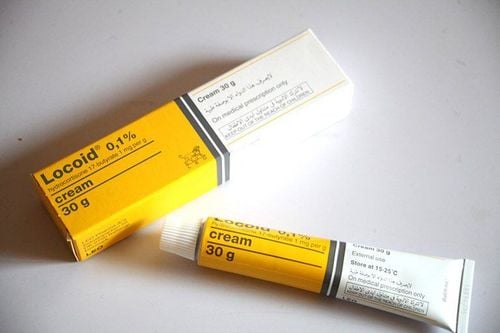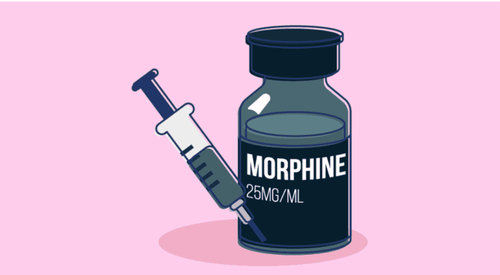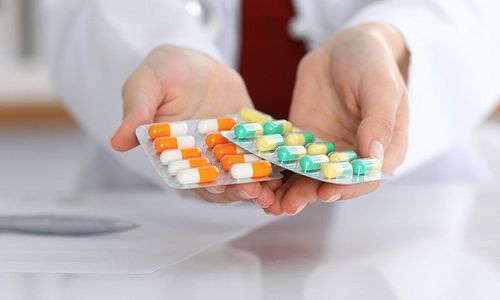This is an automatically translated article.
Stadexmin is often used in the treatment of complicated diseases in the respiratory tract, allergies in the skin and eyes... So what is Stadexmin and how is it used?
1. What is Stadexmin?
Stadexmin is produced in the form of tablets, each tablet has the main ingredients:
Betamethasone 0.25mg Dexchlorpheniramine 2mg Stadexmin The product combines the two anti-inflammatory and anti-allergic effects of corticosteroids, betamethasone, a derivative of prednisolone along with the antihistamine action of dexchlorpheniramine maleate. The combination of betamethasone with dexlorpheniramine maleate allows to reduce the dose of corticosteroids while still achieving the same effect when using corticosteroids alone at higher doses.
Betamethasone is a synthetic corticosteroid with predominantly glucocorticoid action. 0.75mg betamethasone will have an anti-inflammatory effect equivalent to about 5mg prednisolone. Betamethasone has anti-inflammatory, anti-allergic and anti-rheumatic effects. Because of the low mineralocorticoid effect, betamethasone is well suited in conditions where fluid retention is detrimental.
Dexchlorpheniramine maleate is an antihistamine on the H1 receptor, it has very little sedative effect. As with most antihistamines, dexchlorpheniramine maleate also has an anticholinergic side effect, but this effect varies widely from person to person.
2. Indications and contraindications of Stadexmin
Stadexmin is indicated in the following cases:
Treatment of complicated cases in the respiratory tract. Skin and eye allergies, inflammatory eye disorders, conditions requiring additional systemic corticosteroid therapy. Stadexmin is contraindicated in the following cases:
People with hypersensitivity to any ingredient of the drug. Children under 6 years old. Infants and premature infants. People taking monoamine oxidase (MAO) inhibitors. People with systemic fungal infections. Peptic ulcer . Narrow angle glaucoma. Prostate enlargement or bladder neck obstruction.
3. Dosage and how to use Stadexmin
Stadexmin is used orally. Dosage is individualized and tailored to the individual disease being treated, the severity of the disease, and the patient's response.
For adults and children > 12 years old: Recommended starting dose is 1-2 tablets x 4 times/day, taken after meals and at bedtime. Do not use more than 8 tablets/day.
In children, the dose of Stadexmin should be adjusted according to the severity of the disease and the patient's response rather than age or body weight.
For children from 6 to 12 years old: The recommended dose is 1/2 tablet x 3 times/day. If necessary, a daily dose may be added, preferably at bedtime. Do not use more than 4 tablets/day.
Symptoms that may be encountered with an overdose of Stadexmin include:
Overdose reactions of antihistamines can vary from central nervous system depression such as sedation, asphyxia, decreased alertness. , cyanosis, arrhythmia, cardiovascular collapse to irritation such as insomnia, hallucinations, tremors, convulsions, even can lead to death. Other signs and symptoms of overdose include: dizziness, ringing in the ears, ataxia, blurred vision, and hypotension. In children, the predominant stimulant symptoms are the following: atropine overdose-like symptoms (dry mouth, pupil dilation and immobility, facial flushing, fever, and other symptoms) gastrointestinal tract). In addition, the patient may experience hallucinations, loss of coordination, and tonic-clonic seizures. In adults, a cycle of depression, somnolence, and coma can occur, followed by an excitatory phase leading to convulsions. Treatment of overdose Stadexmin is as follows:
Mainly symptomatic and supportive treatment. Stimulants should not be used. Vasopressors can be used to treat hypotension. Seizures are best treated with a short-acting anesthetic such as thiopental. Treat electrolyte imbalances if necessary. Make sure you have enough water and electrolytes. If you forget a dose of Stadexmin, take it as soon as possible. However, if it is almost time for your next dose, skip the missed dose and take your next dose as usual. Note that double the prescribed dose should not be used.
4. Side effects of Stadexmin
Common side effects of Stadexmin include:
Retention of sodium and water Increased excretion of potassium. Menstrual disorders Cushing's syndrome Growth retardation in children Reduced tolerance to glucose Indication of latent diabetes. Muscle atrophy, weakness Osteoporosis Pathological fractures, especially spinal fractures. Aseptic necrosis of the femoral head Somnolence. Dry mouth. Uncommon side effects of Stadexmin include:
Peptic ulcer Perforation and gastrointestinal bleeding Acute pancreatitis Refreshment, insomnia, agitation. Glaucoma, cataracts. Rare side effects of Stadexmin include:
Acne Bleeding, bruising Hirsutism Slow wound healing. Dizziness, nausea. Stadexmin is often used in the treatment of complicated diseases in the respiratory tract, allergies in the skin and eyes... To ensure effective use, patients need to carefully read the instructions before use and refer to them. Use opinion of a doctor, professional pharmacist.
Follow Vinmec International General Hospital website to get more health, nutrition and beauty information to protect the health of yourself and your loved ones in your family.
Please dial HOTLINE for more information or register for an appointment HERE. Download MyVinmec app to make appointments faster and to manage your bookings easily.













